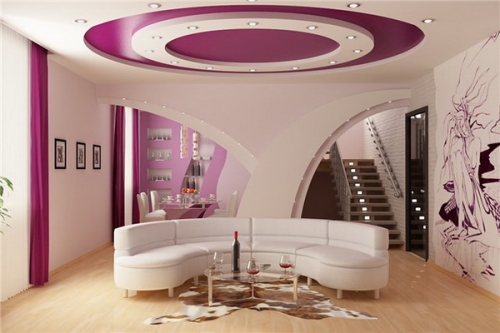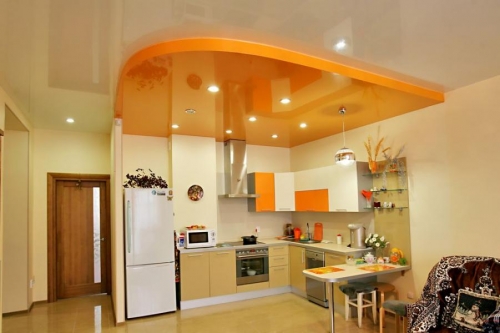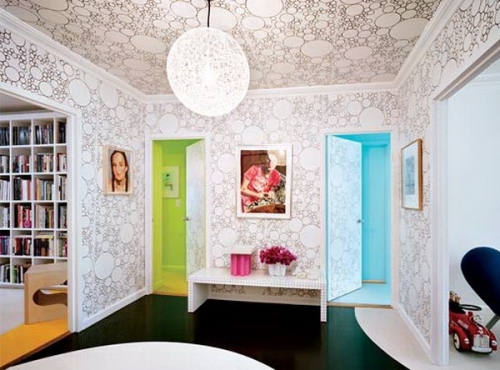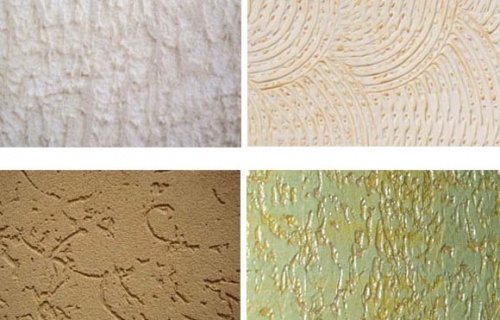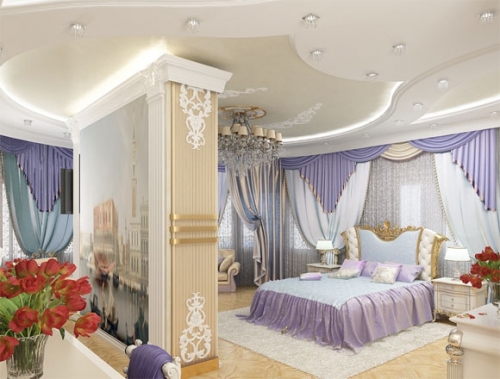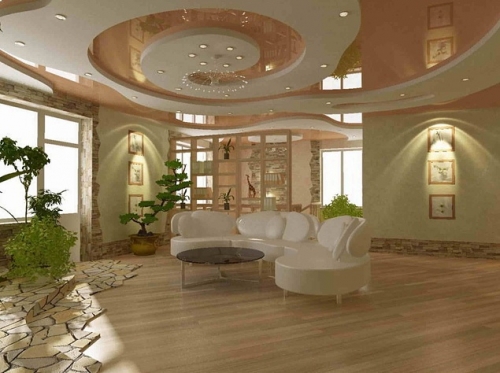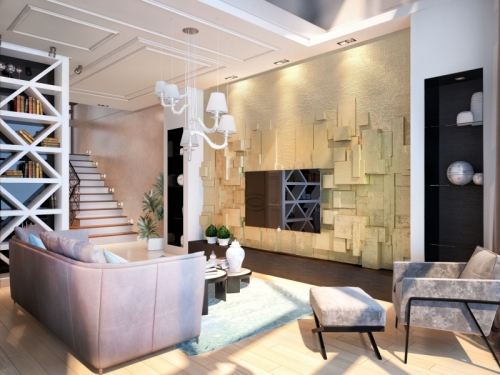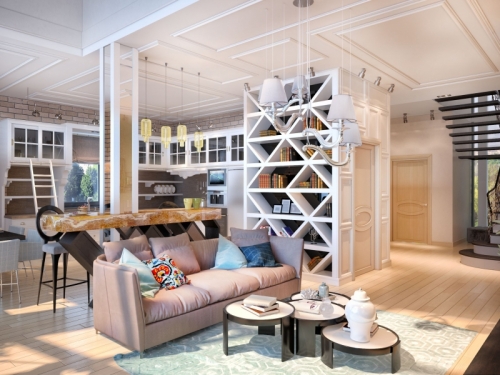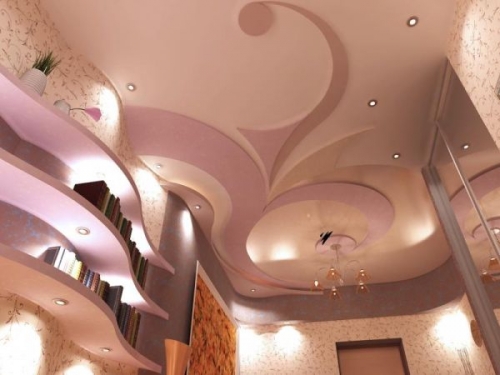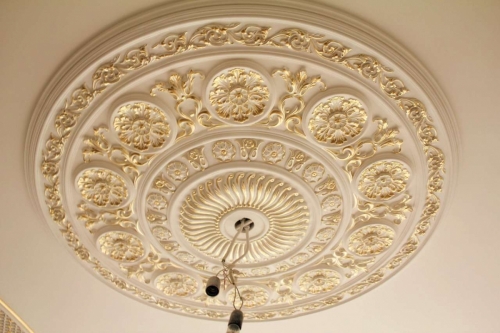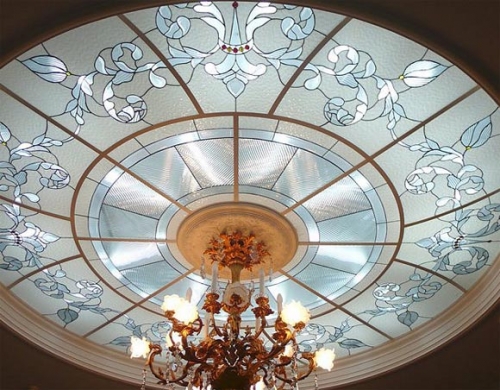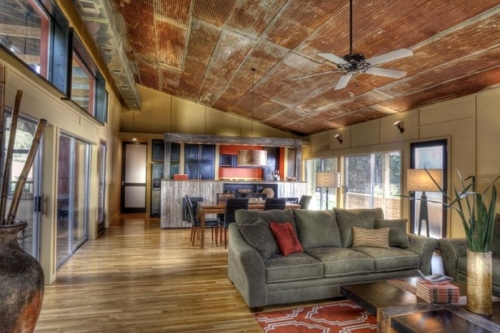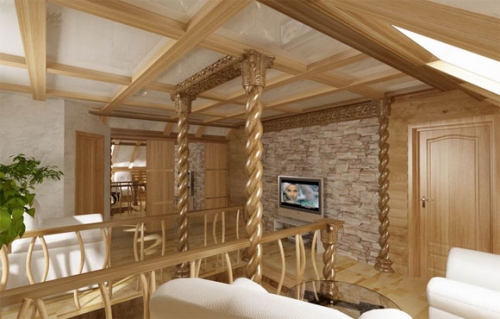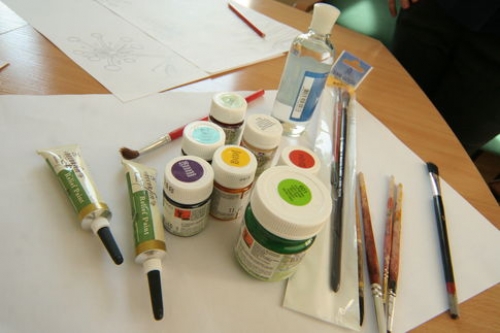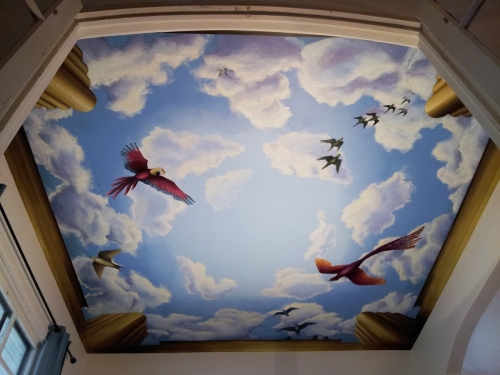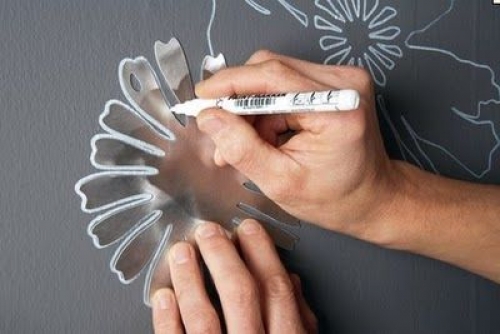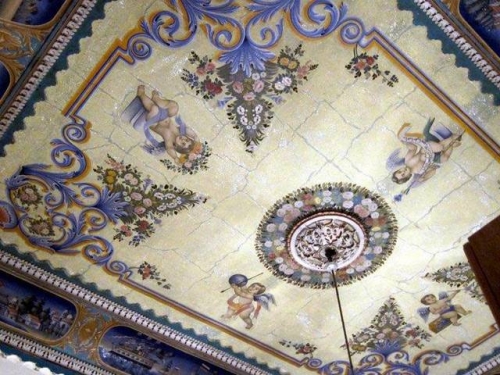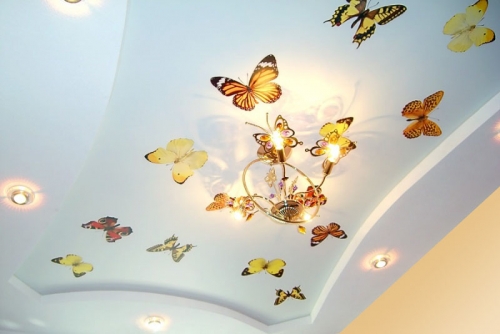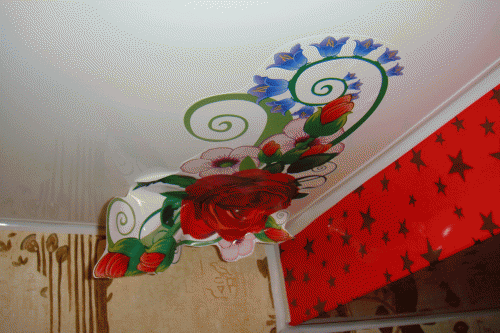Concrete bases are durable and durable, but with a long ...
|
|
Despite the widespread gasification, firewood boilers continue to be widely used ... |
In order for the strip foundation to serve as a reliable support to the house for as long as possible ... |
Decorative design of ceilings
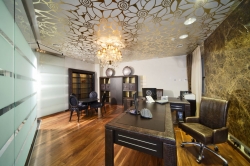
A rich selection of materials and technological solutions for the finish of the ceiling contribute not only to the implementation of highly artistic ideas, but also by the uncontrolled appearance of publications in interior magazines, demonstrating tasteless ceilings, characterized by a large number of multi -level bends, an abundance of point lamps and inappropriate stucco, as well as a vulgar hybrid of the suerrealist venues and a vulgar cell. classic design. All this bad taste, in most cases, presented under the brand of famous European designers, our compatriots without looking back tend to reproduce in their apartments, while guided by the imposed Soviet stereotypes, the brighter the better. Often, these methods of decoration are inappropriately used, since the design of the ceiling with decorative elements is relevant only in the case of its harmonious combination with a holistic interior concept, the capabilities of which are directly determined by the individual characteristics and technical characteristics of the room. In connection with the existence of the unspoken principles, according to which the ceiling is judged by the repair of the ceiling, we will tell you how to avoid typical errors during the design of decorative ceilings, making the ceiling surface of the refined and unique.
Content
- How to avoid typical errors in the process of designing ceilings?
- Traditional and modern ceilings decoration methods
- Decorative plaster: main varieties
- Decorative ceilings made of drywall: design rules
- Imitation of stucco molding options for decorative ceilings
- Alternative ceilings decorating methods
How to avoid typical errors in the process of designing ceilings?
To avoid typical errors that the master make in the process of finishing the ceiling, follow the tips presented in this article. If the ceiling in the room is characterized by standard height, give up cornices with massive stucco molding designed to create an interior in a classic style. The idea of \u200b\u200barranging ascetic minimalism, supplemented by constellations of spotlights, will also not be appropriate. Even if you are inclined to non -standard interior directions with the artistic prefix, remember that the basis of its concept is the balanced and logic of not only color, but also secondary accessories. In case of neglect of the basic postulates of modern interior solutions, it would seem, the winning design concept will turn into a meaningless set of accessories of the common European -repairing.
Traditional and modern ceilings decoration methods
A few decades ago, when only ordinary decoration methods were used during the repair of the apartment, the ceilings were only painted or whitewashed, and the highest manifestation of the owner’s ingenuity was a ceiling surface pasted with multi -colored wallpaper. Today, the ceiling, being a basic platform for creativity, performs the function of a kind of canvas, on which the master can realize his most daring fantasies. Modern methods of finishing the ceiling, being the highest manifestation of ingenuity, allow you to change the space of the room beyond recognition.
Over the past few decades, the arsenal of the home master has replenished with a number of innovative decisions, which have preserved and even increase their popularity. These include stretch ceiling structures and decorative suspended ceilings, ceilings using ceramic and glass tiles, as well as the arrangement of mirror ceilings and decoration using various stained glasses. All this variety of methods allows for the decorative design of ceilings not only with the help of traditional plaster, but also to operate with coarser textures, while changing the usual configuration of the ceiling in favor of a complex or multi -level structure. Despite the fact that some of the methods listed above acquired the status of traditional, smooth or sharp step lines created in the process of their implementation will give the entire room of charm and individuality. To date, relatively new and original ways of designing the ceiling are as follows:
- Design of ceilings using stencil painting;
- Decorating ceilings with stained glass systems;
- Arrangement of mirror ceilings;
- Ideas for designing a ceiling using fabric, skin, traffic jams and even parquet.
Decorative plaster: main varieties
This version of the decorative coating of the ceilings involves applying a heterogeneous plaster mixture to the ceiling surface, which includes a variety of fillers: small pebbles, wood fibers, as well as pieces of quartz and mica that give mixtures heterogeneity. In view of the plasticity of the plaster, the home master gets the opportunity to create a relief texture, the outlines of which depend on granules and binders that are part of the mixture.
Currently, the masters have several types of plaster:
- Structural plaster, which is a ready -made mass of white color, which, in the process of tinting, acquires the desired shade. It is applied with an even layer on the ceiling surface and, using special rollers, scallops and spatulas, form the necessary relief. Thus, the technique of applying structural plaster requires sufficient professionalism from the master;
- Textured plasterThanks to the features of the granules that are part of it, it forms a relief without additional interventions. The only thing that must be done in the future is giving the desired color of the textured surface.
If you decide to equip the ceiling with decorative plaster, but do not have sufficient experience, the most preferred option for you will be the use of textured plaster. In order to get different relief and drawing in the process of applying it, it is necessary to combine plaster mixtures with fillers of different fractions.
The advantages of decorative material are that the plastered plane is characterized by a seamless plane, and all available defects will be disguised as a relief.
Important! Experts recommend giving preference to water -based decorative plaster, in view of the fact that it does not distinguish harmful substances. Subsequently, dispersion paint is applied to the plastered surface.
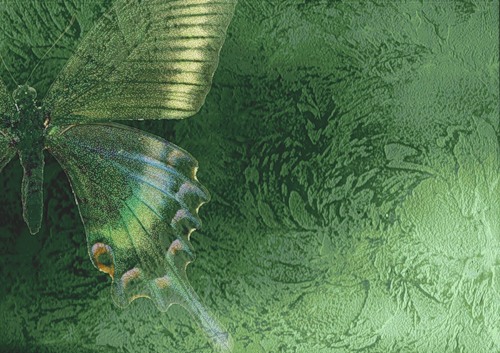
Decorative ceilings made of drywall: design rules
Sometimes for certain reasons, plaster cannot be used as a decorative ceiling coating. We are talking about repairing in two-, three-year panel new buildings, which are in the shrinkage stage. In this case, there is a high risk of cracks on the plastered surface. As a forced alternative to classical decorative plaster, a drywall ceiling acts, also indispensable, and when it is necessary to hide the construction defects of the ceiling, lay systems of electrical tacks and ventilations, as well as install spotlights.
If you still have not decided on the material for decorative ceilings, experts recommend giving preference to drywall, which has a number of undeniable advantages:
- Using drywall, you can realize the most daring design fantasies;
- Plasterboard structures for a long time retain their original appearance, remaining clean and neat;
- Drywall is environmentally friendly material;
- By arranging a decorative ceiling made of drywall, you can hide not only all defects in the ceiling surface, but also available communications;
- An important advantage of drywall is its democratic value.
- If a distinctive feature of your living room is a large area and height that leaves the scope for experiments, you can give it an atmosphere of solemnity by betting on a combination of drywall and bright inserts of stretch ceiling, as well as hanging voluminous openwork lamps.
- The use of drywall allows you to design multi -level ceiling structures, the steps of which are painted in various tint solutions of the same color, which will become the basis that a professional designer took part in the repair process.
To make the room visually more spacious, experts recommend performing drywall ceilings in light shades: blue, pearl gray, etc. In cases where the living room is quite large, the color scheme of ceilings should be performed mainly in pastel and flower tones. To revive the color scheme and upbringing of mood, it is recommended to add bright shades to interspers. In view of the fact that the ceiling is the final element of any interior composition, in many cases the best option is still white.
Decorative ceilings made of drywall photo
If you plan to install decorative plasterboard ceilings, retreating from the classical colors, experts recommend adhering to certain rules for the design of the room, which will avoid disappointments.
- The most preferred option for decorating the room involves staining the ceilings in the same color as the walls, but its intensity should be half reduced. This is due to the fact that on the ceiling the colors seem subjectively darker than they really are;
- If the interior already has a pink color, a light shade of pink is unacceptable when decorating a ceiling;
- If you plan to arrange the room in saturated tons, the choice of shade must be started with the ceiling;
- The use of shades of cold colors contributes to the visual increase in the height of the ceilings, however, if the windows of the premises extended to the north side, it is recommended to abandon this design reception;
- If you prefer color wallpaper with a pattern to decorate the room, it is not recommended to paint the ceiling in the background color of the wallpaper, since it will take the form of rough unpainted plaster;
- Textured ceilings and structures with a complex configuration are recommended to be painted only in white and cream shades.
Imitation of stucco molding options for decorative ceilings
The interior of the room, made in an antique or Gothic style, allows decorating the ceilings with polyurethane stucco molding, which, unlike gypsum elements, is characterized by the ease and simplicity of installation. The decorative coating of the ceilings imitating stucco molding is represented by many varieties, the most popular of which are:
- MoldingsElements designed to decorate the joints of the ceiling with walls. Smooth moldings, the decorative design of which does not imply the presence of a relief pattern, can be used as additions to interiors in the classic style, modern styles and even the modern direction of high-tech;
- Sockets Also, they do not lag behind in popularity and are used for decorative design of the places of attachment of chandeliers and ceiling lamps. Also, a variety of floral arrangements, cornices and borders are used as elements of ceiling decor. For fastening polyurethane stucco, liquid nails and special glue are used.
Important! In view of the high cost of polyurethane stucco molding, experts recommend making stucco molding independently from alabaster, which is diluted with water and PVA glue and poured into molds. After the final solidification of the mixture, the products are removed from the molds and their surface is polished.
The main advantages of polyurethane stucco molding:
- High strength and long -term operational period;
- Increased moisture resistance;
- The slight weight of decorative products from polyurethane;
- Polyurethane elements are easily bending, taking the shape of any curved planes;
- Often, polyurethane stucco is painted, but unpainted elements will not turn yellow over time and retain their original appearance;
- High decorative characteristics and rich selection of elements.

Alternative ceilings decorating methods
Decorating the ceiling with stained glass: the main varieties
Ceiling stained -glass windows are one of the common options for the status finish of the ceiling surface. Despite the fact that decorating the ceiling with the help of a composition of multi-colored glasses collected in a single composition is expensive pleasure, it does not lose its relevance and is used not only in premium houses.
Varieties of ceiling stained glass windows:
- Tiffany stained glass, the manufacturing technology of which involves the fastening of colorful elements of a glass panel using brass, copper or lead tires. Features of these stained glasses determine the need for special skills for their assembly and installation;
- Facela stained glass, also made of joining elements, however, unlike the previous version, the chamfer is removed around the entire perimeter, which helps to increase the light firing, so that the interior becomes more original;
- Artificial stained glass It is a transparent whole glass on which an artistic painting is applied or a film imitating a stained glass image is pasted.
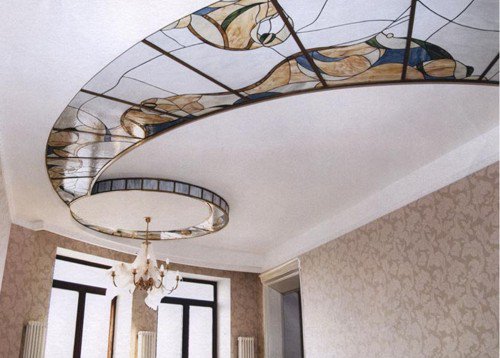
Decorative wood ceilings An equally popular option for designing a ceiling surface, for which a wooden lining is required, appropriate within the framework of almost any stylistic solution of the interior.
Wooden decorative ceilings photo
Ceiling painting: varieties and brief characteristics of the method
Apply the image to the ceiling surface in several ways:
- Draw a picture with your own hands (possibly if there is artistic talent);
- Apply the image using a stencil;
- In the process of applying the picture, use ready -made stamps and rollers;
- Make an application using vinyl stickers.
Consider each method in more detail.
Independent application of the picture
- DIY drawing with your own hands is a multi -stage process consisting of surface preparation, drawing a sketch and its subsequent coloring.
- The preparation of the surface implies the removal of the old plaster with a spatula with the subsequent thorough washing of the ceiling with a brush. Having completed these measures, an acrylic primer is applied to the surface with a roller, which is that it is possible to identify all available defects. The detected defects are eliminated with the help of plaster and, having waited for the decoration, the surface is polished. After that, apply a layer of finish putty and acrylic primer, acting as a base for the drawing;
- Applying a drawing to the surface of a large area located above the head is associated with a number of difficulties and not always can even a professional. In view of this, the key to successful work is the creation of comfortable conditions for work that imply the installation and fixation of a ladder or a special pedestal that allows you to work lying down and widespread among professionals;
Having prepared all the necessary materials and creating comfortable working conditions, they begin to apply a sketch. This can be done in several ways:
- The first method implies the use of trapping in full size. A drawing is applied to it, all lines of which are struck with black coal, after which the pattern, captured on tracing paper, is applied to the ceiling surface with the shadeless side. All lines of the drawing are carefully pressed with a pencil;
- The second method implies the use of a diaprotector, which projects the drawing directly to the surface of the ceiling. All that is required of the artist is to circle the resulting image along the contour.
- The next stage is painted. Experienced craftsmen recommend starting coloring the picture from large parts, having previously mixed the required shade on the palette. Completes this stage by drawing and detailing of small elements.
Important!Despite the fact that acrylic paints are characterized by resistance to moisture and ultraviolet radiation, they need additional protection. In order to surely interpret the operational period of acrylic paints, the image is covered with acrylic varnish, which gives the image additional brightness and expressiveness.
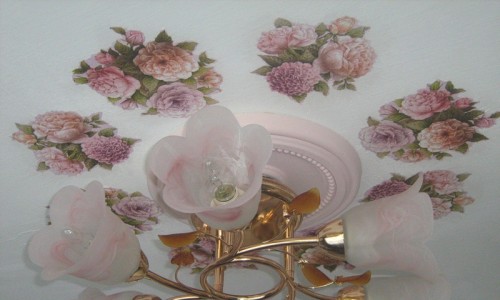
Stencil painting of the ceiling surface
Stencils do not need to be done by yourself, it is enough to purchase them in a specialized store. Due to the fact that the material from which the templates are made quickly fails, it is necessary to buy several identical specimens. The technology for working with stencils is not difficult, since on the one hand an adhesive composition is applied to them, which allows you to glue the template to the surface of the ceiling. Together with template sketches, sponges and stencil brushes are acquired, with the help of which they apply paint to the surface of the ceiling. In view of the fact that the brush is distinguished by short and hard bristles, the paint is applied not with strokes, but by the method of ending, which is necessary in order to prevent the flow of paint by the stencil. This condition ensures the clarity of the picture.
The application is carried out from the center to the edge. In order to see the result of the work, the template is neatly peel off and the color intensity is checked. If necessary, adjusting. After the final drawing of the stencil, it is removed and proceed to the design of another site.
Application Available Winding option for ceiling
If you still have not been able to decide on the method of designing a ceiling surface, decorative stickers on the ceiling that are used to create an application will be the most preferred option for you. By giving them preference, you can easily disguise all the existing defects in the ceiling surface without resorting to large -scale repair. The advantage of decorative stickers on the ceiling, the photo of which you can see below, is the possibility of their easy removal and gluing to another place without any traces on the decorated surface.
As stickers on the ceiling, you can use ready-made vinyl stickers-stickers or independent stickers from paper, cardboard, foam and even pieces of drywall.

